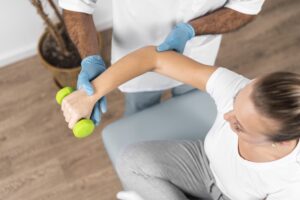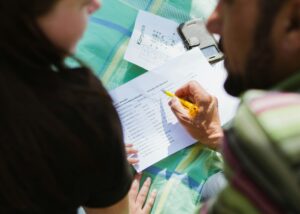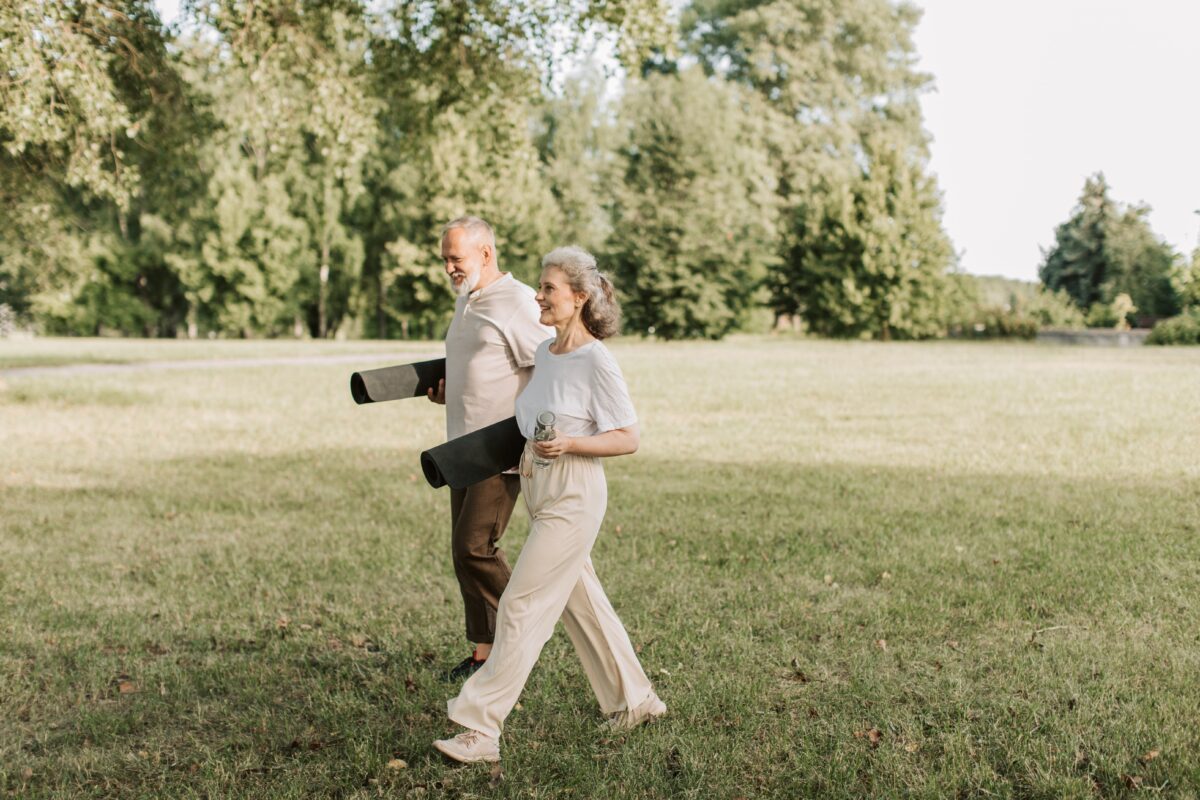
Fall Prevention for Life: Unleash Brain Fitness to avoid injury
Introduction:
Falls can have serious consequences, especially for older adults. It is, after all, age related. Fall prevention is our concern.
In this blog post, we will explore various strategies and interventions to prevent falls while emphasizing the importance of mindfulness, brain health, and good sleeping habits.
We delved into the best advice from the National Institute on Aging.
Let’s talk about this.
II. Understanding Fall Prevention
To effectively prevent falls as we age, it is essential to have a comprehensive understanding of fall prevention strategies and their significance.
By addressing the underlying factors and implementing targeted interventions, we can reduce the risk of home falls and promote safety.

- Leading Causes of Falls in Older Adults
Before delving into preventive measures, it is crucial to identify the leading causes of falls among older adults. According to the Centers for Disease Control and Prevention (CDC), common factors include:
- Environmental hazards: Cluttered pathways, poor lighting, and tripping hazards like loose rugs or electrical cords increase the risk of falls. These are a leading cause.
- Physical conditions: Age-related changes, muscle weakness, physical equilibrium issues, and chronic conditions such as arthritis contribute to fall risk.
- Medications: Certain medications can cause dizziness, drowsiness, or impaired balancing skills, increasing the likelihood of falls.
- Chronic diseases: Conditions like Parkinson’s disease, dementia, and stroke can affect mobility and coordination, elevating the chances of a fall.
- Identifying Risk Factors for Falls
To effectively prevent falls, it is crucial to identify and address the specific risk factors that contribute to an individual’s susceptibility to injury.
By recognizing these increased risk factors, we can implement targeted interventions to mitigate the risk.
Some common risk factors recognized by the Centers for Disease Control and Prevention, include:
- Previous Falls: Individuals who have experienced falls in the past are at a higher risk of falling again.
- Muscle Weakness: Reduced muscle strength, particularly in the lower body, can affect equilibrium and stability.
- Foot Problems: Foot pain, improper footwear, or foot deformities can impede balance and increase the risk of falling.
- Vision Impairment: Poor vision and untreated eye conditions can hinder spatial awareness and increase fall risk.
- Environmental Hazards: Slippery or uneven surfaces, inadequate lighting, and obstacles in the living environment can contribute to falling.
- Medications: Certain medications, especially those that cause dizziness or drowsiness, can increase the risk of falling.
- The Impact of Serious Injuries from Falls
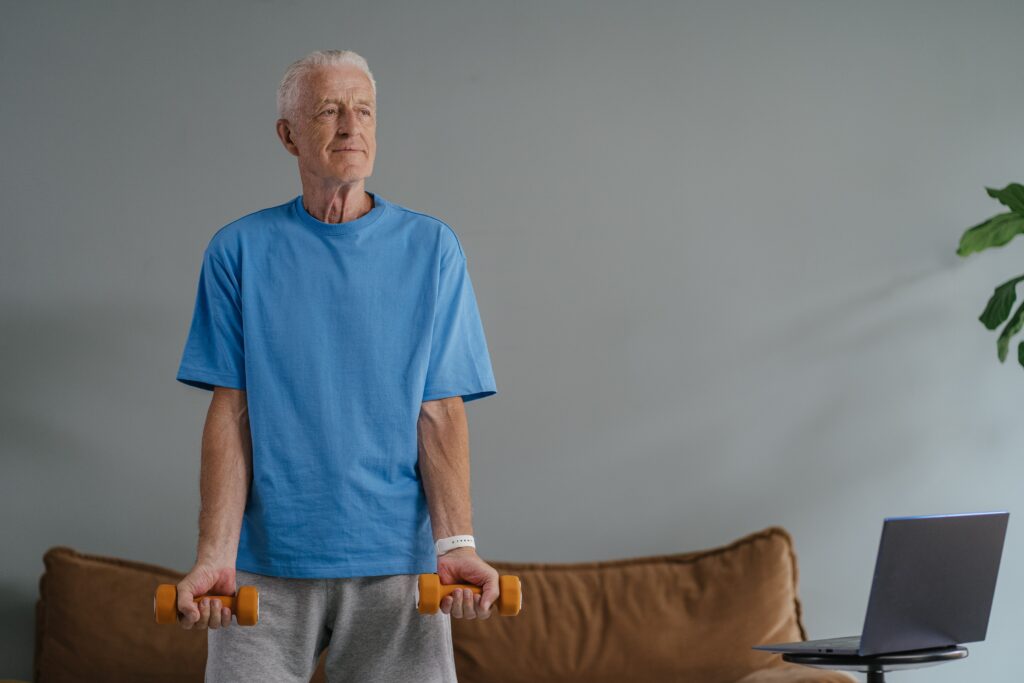
Falls can lead to a serious injury or severe injuries, particularly among older adults.
It is crucial to understand the potential consequences of falling to emphasize the importance of fall prevention in older people.
According to the National Institute of Aging, some of the serious injuries resulting from falls include:
- Fractures: Falls can cause fractures, especially in the hip, spine, forearm, and wrist. These fractures can significantly impact an individual’s mobility and independence.
- Head Injuries: Falls can result in traumatic brain injuries (TBIs), which can have long-lasting cognitive and physical effects.
- Soft Tissue Injuries: Falls can cause sprains, strains, and contusions, leading to pain, limited mobility, and increased probability of falling in the future.
- Psychological Impact: Falling can also have psychological consequences, such as a fear of falling (which can restrict activity levels and social participation) and a decline in overall quality of life.
By understanding the potential severity of fall-related injuries, we can reinforce the need for proactive fall and injury avoidance measures.
- Role of Disease Control in Fall Prevention
This plays a vital role in the overall efforts to prevent falls.
By addressing underlying health conditions, improving balance and promoting wellness, we can effectively reduce the chances of falling.
- Chronic Disease Management: Managing chronic conditions such as diabetes, heart disease, and osteoporosis can help improve overall health.
- Medication Management: Working with healthcare professionals to review and adjust medications can minimize side effects that may increase the risk of falls.
- Regular Check-ups: Routine medical check-ups and screenings can help identify any emerging health issues or changes.
- Health Education: Providing education and resources about fall prevention can enhance awareness and promote proactive measures.
- Your Physical Therapist and other Fall Prevention Interventions
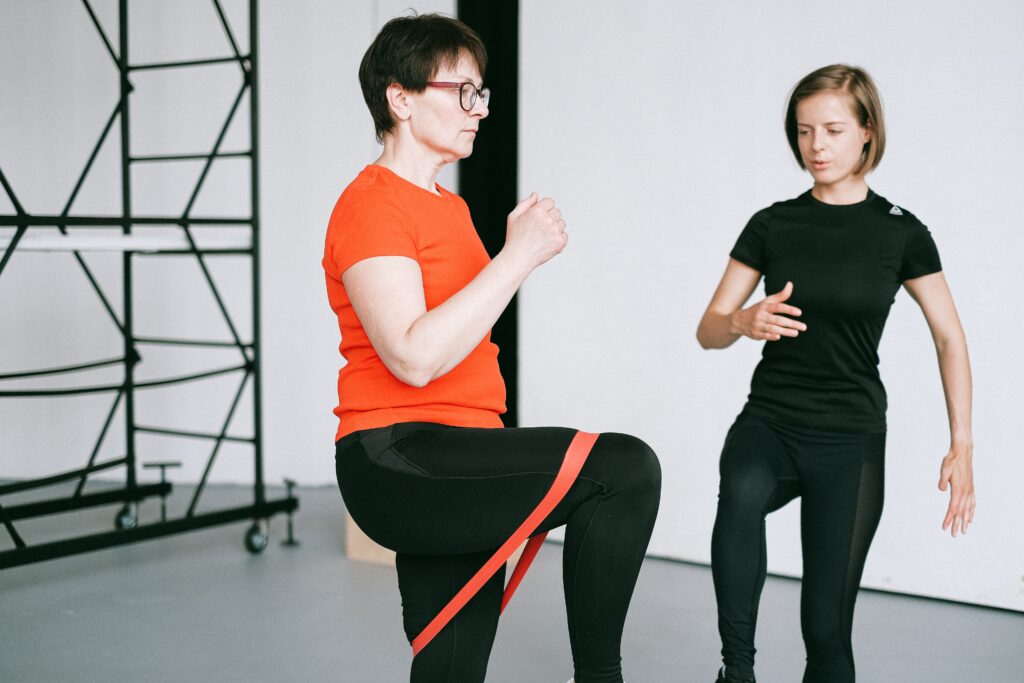
Here are some key professionals involved in fall prevention:
- Physical Therapist: A physical therapist can assess an individual’s balance, strength, and mobility and create tailored exercise programs.They can also provide guidance on proper body mechanics and assistive devices to enhance safety.
- Occupational Therapist: An occupational therapist focuses on promoting independence in daily activities for older people.They can assess the individual’s home environment, recommend modifications, and provide strategies for fall prevention.
- Primary Care Physician: Regular visits to a primary care physician allow for comprehensive assessments of an individual’s overall health.
- Geriatric Specialist: Geriatric specialists have expertise in managing health concerns specific to older citizens.
- Exercise for Fall Prevention: Engaging in certain exercises like CogniFit Movements can provide balance and numerous benefits for older people in terms of falls prevention. These practices focus on improving physical equilibrium, coordination, and strength. These exercises involve slow, flowing movements combined with deep breathing and meditation, enhancing body awareness and promoting better postural control. These exercises enhance muscle tone, flexibility, and joint mobility. Regular participation in these exercises can help elderly individuals develop a stronger sense of body control, improve their posture, and enhance their overall physical well-being, ultimately reducing the likelihood of injury. If you spend many hours sitting in a chair, these movements will help to provide the strength you need to keep yourself upright.
III. Identifying Home Hazards
- Conducting a Comprehensive Assessment of the Living Environment
Take note of areas that you fear may pose a higher risk of falls, such as hallways, stairs, bathrooms, and entryways.
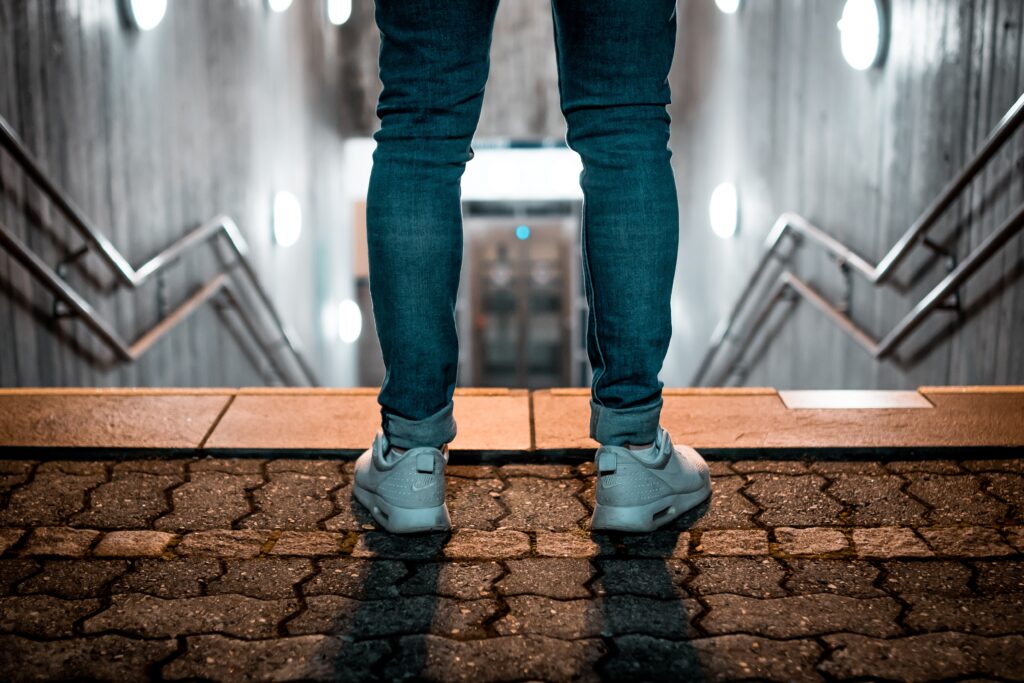
- Lighting: Ensure good lighting throughout the house, especially in areas prone to falls, such as staircases and hallways. Install light switches at the top and bottom of stairs for easy access.
- Tripping Hazards: Remove any clutter, loose rugs, or objects obstructing pathways. Secure electrical cords to prevent tripping. Keep floors clutter free and clear of spills, and address wet surfaces promptly.
- Home Modifications: Consider making home modifications to increase safety in each room, such as installing grab bars near toilets and showers, and securing handrails along staircases.Ensure that if the front door has a lock, that it is at a suitable height. Make sure that coffee tables are not in the way.
- These modifications provide support and stability, reducing the risk of falls.
- Nonslip Mats: Place them in the bathroom, near sinks, showers, and bathtubs to minimize the danger of slips and falls on wet surfaces.For the same reason, make sure to clean up spills immediately.
- Creating a Fall-Proof Bedroom and Bathroom
- Fall proofing the bed: Ensure the bed is at an appropriate height for easy entry and exit. Use a sturdy bed frame and consider installing bed rails for added support. Keep a nightlight within reach to navigate safely during night time. A light or two in the right places and you make the home safer for older people. Place a grab bar where you will need it.
- Fall proofing a bathroom: Install grab bars near the toilet, shower, and bathtub to provide stability and support. Use nonslip mats or adhesive strips in the bathtub or shower to prevent slips. Consider a shower chair or bench. Use a door that is easy to lock and unlock.
- Assistive Devices: Consider the need for assistive devices such as a raised toilet seat, bath transfer bench, grab bars or handheld showerhead to facilitate safe and independent use of the bathroom.
- Accessibility: Ensure that commonly used items are within easy reach, eliminating the need for reaching or bending over.
IV. Promoting Mindfulness, Brain Health, and Good Sleeping Habits
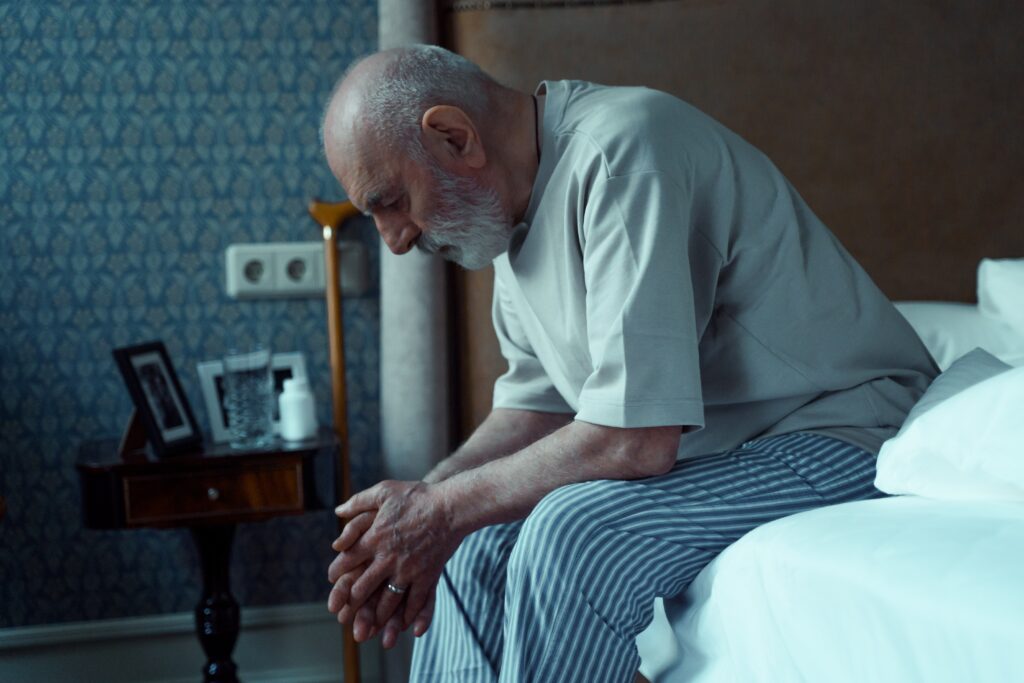
In addition to addressing physical factors and environmental hazards, promoting mindfulness, brain health, and good sleeping habits can contribute to fall prevention.
Ways to reduce the risk of falling.
- Mindfulness Practices for Fall Prevention
Incorporating mindfulness practices can help individuals stay focused, and reduce the risk of falls.
- Mindful Walking: Pay close attention to each step, focusing on the movement of your feet and maintaining a steady gait. As you place one foot in front of the other and push on, you find that mindfulness can fit easily into your life. Mindfulness is not always sitting and wearing no shoes in the lotus posture.
- Breath Awareness: This practice can help reduce stress and improve mental clarity, promoting better decision-making and reducing the risk of falls.
- Mindful Movement: Engage in exercises like tai chi or yoga or CogniFit Movements that emphasize balance, coordination, and body awareness. These practices can improve strength, flexibility, and stability, reducing the likelihood of falls.
- Nurturing Brain Health for Fall Prevention
A healthy brain contributes to better cognitive function, reducing the chances of falls.
Incorporate the following strategies to nurture brain health:
- Regular Physical Activity: Engaging in regular physical activity promotes blood flow to the brain and improves cognitive function. Aim for activities that challenge coordination and balance, such as walking, dancing, or swimming.
- Mental Stimulation: Engage in activities that challenge the brain, such as puzzles, reading, learning new skills, meditation or engaging in creative hobbies. These activities promote brain health.
- Adequate Sleep: Prioritize good sleep habits, as insufficient sleep can affect balance, cognitive function, and reaction time. Establish a consistent sleep routine and practice relaxation techniques before bed to promote restful sleep.
- Maintaining Good Sleeping Habits for Fall Prevention
Quality sleep at night is essential for overall well-being and fall prevention.
- Consistent Bedtime Routine: Establish a regular bedtime routine to signal to your body that it’s time to wind down and prepare for sleep.
- Comfortable Sleep Environment: Create a sleep-friendly environment by ensuring your bedroom is quiet, dark, and at a comfortable temperature.
- Limit Stimulants: Avoid consuming stimulants such as caffeine or nicotine close to bedtime. Instead, opt for relaxing herbal teas or light decaffeinated beverages.
- Manage Stress: Incorporate stress management techniques to promote relaxation and reduce anxiety before bed.
V. Empowering Older Adults and Engaging Family Members
- Empowering Older Adults
- Education and Awareness: Provide information about fall prevention, including risk factors, home safety measures, and exercises to improve balancing skills and strength. Empower them with knowledge so they can take proactive steps to prevent falls.
- Self-Assessment: Encourage older adults to assess their own fall risk factors and identify areas for improvement.
- Regular Physical Activity: Encourage physical activity to improve corporeal equilibrium, muscle strength, and coordination.
- Foot Care: Emphasize the importance of proper foot care and wearing appropriate footwear. With the right shoes on your feet, you can avoid bad walking habits and avoid injury. Wear shoes that support you and fit easily.
- Engaging the Family
- Education and Support: Provide the family with educational resources on fall prevention and the role they can play in creating a safe environment.
- Home Safety Assessment: Encourage family members to conduct a home safety assessment. This can involve identifying and addressing hazards, ensuring proper lighting, and installing necessary assistive devices such as a grab bar and night lights.
- Communication between families and senior citizens about fall prevention.
- Supportive Environment: Foster a supportive environment where families actively participate in fall prevention efforts.
Conclusion: Prioritizing Fall Prevention for Mindful and Healthy Aging
Preventing falls is a crucial aspect of mindful and healthy aging.
By understanding the risks, implementing interventions, and fostering a supportive environment for older persons, we can significantly reduce the incidence of falls among the older population.










